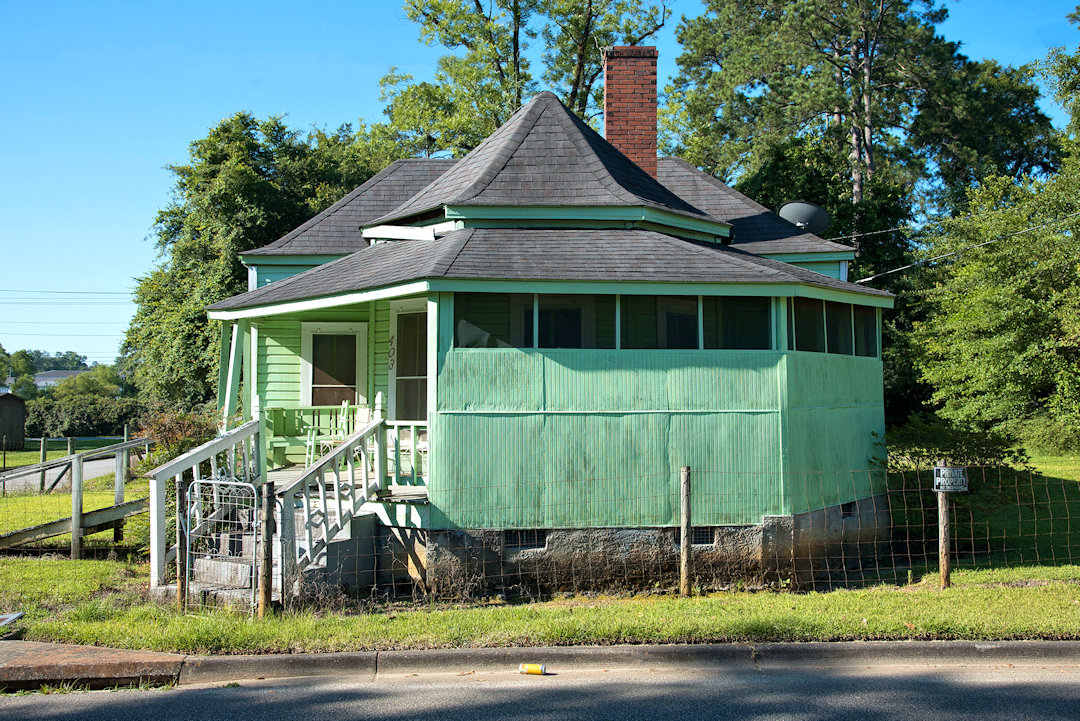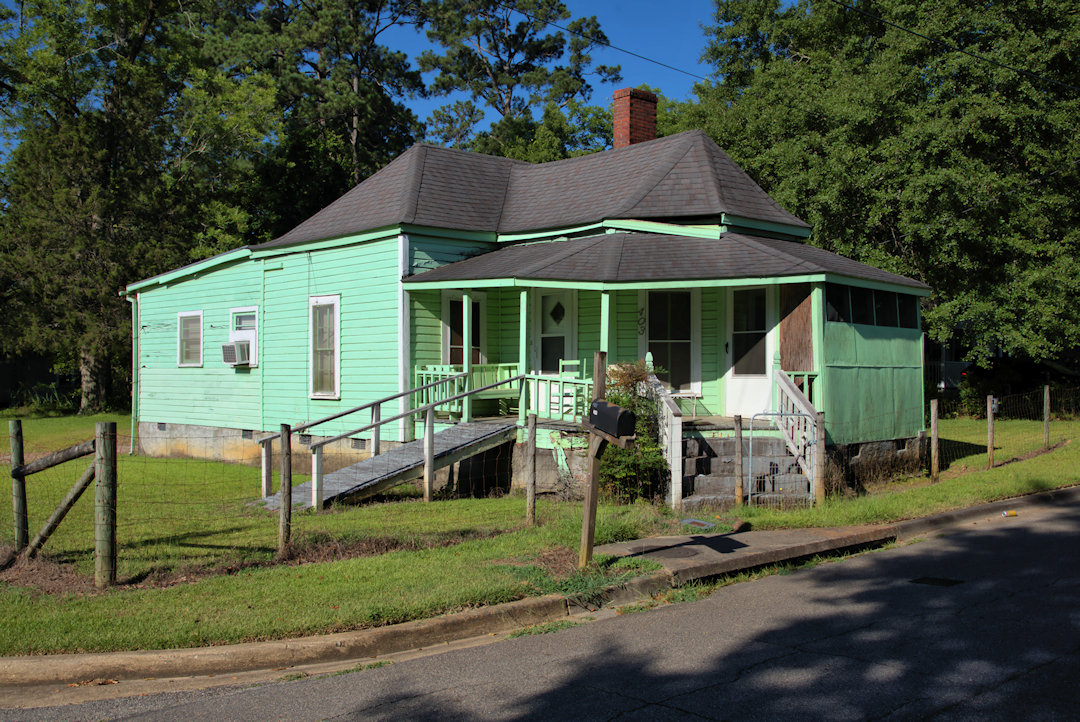
This small winged-gable cottage is a representative property of the Dewey City Historic District, an historic Black neighborhood in Thomasville. The enclosure of the porch somewhat obscures it strong Queen Anne/Folk Victorian influence. Dewey City, named for Admiral George Dewey, was officially platted in 1904, and the district includes the other planned neighborhoods of Pine Summit (1911), Homestead Park (1911), and Douglass Heights (1947). The area is characterized by several vernacular house types, including bungalows, shotgun houses, pyramidal cottages, American Small Houses, and gable front cottages. This exceptional gabled-wing cottage, with Folk Victorian influences, is one of the most architecturally interesting.

The land that came to be known as Dewey City was initially purchased by Charles Bluett Quinn to provide housing for Thomasville’s emerging Black middle class families. The land was considered undesirable because of the sickness and disease associated with the temporary Civil War prison camp that was located on the edge of the neighborhood, It was also a low-lying area, with the numerous branches of Oquina Creek often causing flooding. The National Register of Historic Places notes that property owners who were compassionate to ex-slaves began selling and financing parcels to African-Americans as early as the 1890s.
Dewey City Historic District, National Register of Historic Places

Interesting post, interesting house! Thanks for documenting both the buildings and the history behind them, before they are lost to the ages.
Stories like this might be good to capture on the Georgia Historical Markers. I don’t know what criteria is used for those. Or at least in a booklet on the city’s history and sights.
Thanks, Rafe. I do think we need more historic markers for these vernacular markers, but like you, don’t really know the process. Mr. Hadley, who has the Black history museum, has spent a lifetime collecting memorabilia and histories from the community. Not every community is so lucky.
God bless him!